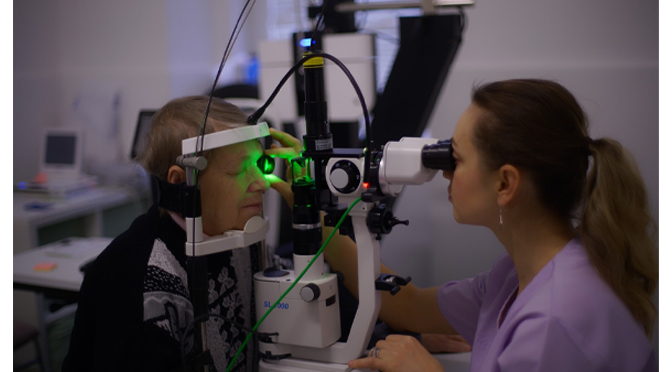By Capital Blue Cross – THINK (Trusted Health Information, News, and Knowledge) is a community publication of Capital Blue Cross. Our mission is to provide education, resources, and news on the latest health and insurance issues.
Routine eye exams can do much more than help diagnose and correct common vision problems. They also can help spot serious medical issues like diabetes, heart disease, and more.
You’ve probably heard the expression “the eyes are the window to your soul.” But did you know your eyes also can offer a glimpse into your overall health?
Symptoms of serious medical conditions like diabetes, heart disease, high cholesterol, high blood pressure, thyroid disease, vitamin deficiencies, and even certain types of cancer sometimes can be spotted in a routine eye exam.
“In many ways, our eyes can act as an early warning system,” said Dr. Jeremy Wigginton, Chief Medical Officer at Capital Blue Cross. “Things like blurred vision, red or itchy eyes, or light sensitivity should never be ignored, because they might be signs of serious and preventable health issues.”
Of course, routine eye exams also can help diagnose and correct common vision problems, making it safer to do daily tasks like driving and improving the overall quality of life.
Uncorrected vision issues aren’t merely an inconvenience – they can affect your productivity and overall quality of life. A study by Prevent Blindness, a Chicago-based eye health organization, predicted the nation’s price tag for vision problems, counting medical treatments and productivity losses, could reach $384 billion annually by 2032 and $717 billion by 2050.
Having and using vision benefits can help cut those losses. HCMS Group, a risk management firm, found employers with stand-alone vision benefits saved $5.8 billion in reduced healthcare costs over a four-year span. Those savings resulted from lower turnover rates and lower-than-expected productivity losses tied to vision problems.
Savings also were seen from early detection and treatment of potentially costly medical issues. That’s because comprehensive eye exams provide a non-invasive view of blood vessels and the optic nerve, both of which can provide early warning signals for other health problems.
The HCMS study also found that 34% of new diabetes cases, 39% of new high blood pressure cases, and 63% of new high cholesterol cases were first detected through eye exams.
Undetected, those conditions can lead to extremely costly, long-term medical interventions.Most vision care plans, such as Capital Blue Cross Vision, cover some or all the costs for routine eye exams, eyeglass frames, and contact lenses.
“Even if you think your eyesight is fine, checking in with an eye doctor is a smart move,” Dr. Wigginton said. “You might have vision issues that aren’t readily apparent, or other medical issues affecting your eyes that you can act on early to prevent them from becoming more serious.”
You can find more useful articles at https://thinkcapitalbluecross.com/
Information provided to TVL by:
JERRY REIMENSCHNEIDER
Senior Public Relations Specialist | Brand & Market Strategy
https://www.capbluecross.com/





